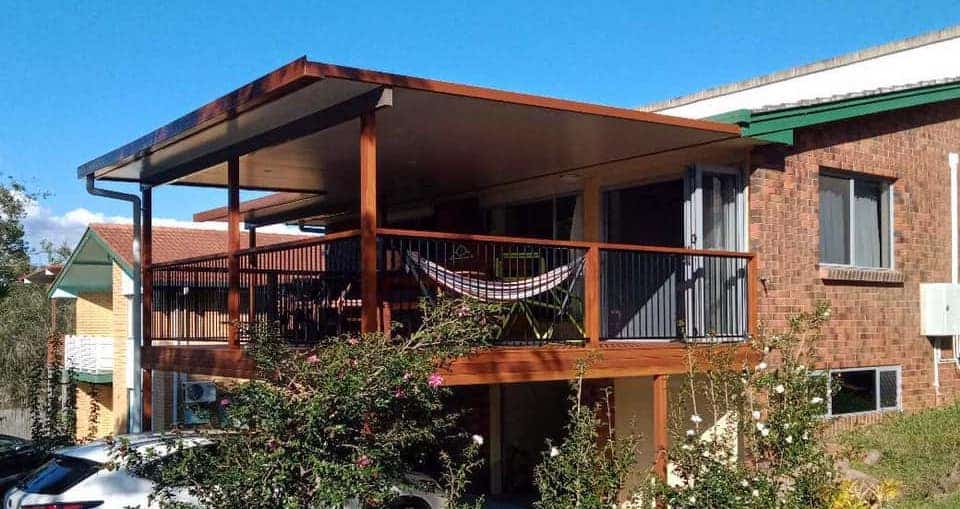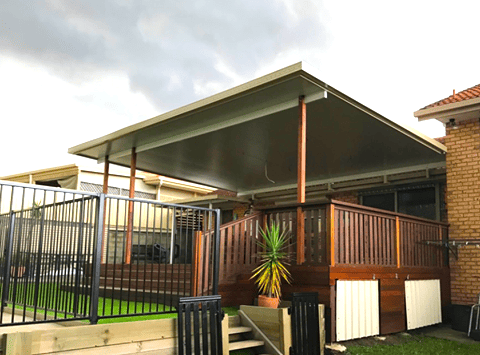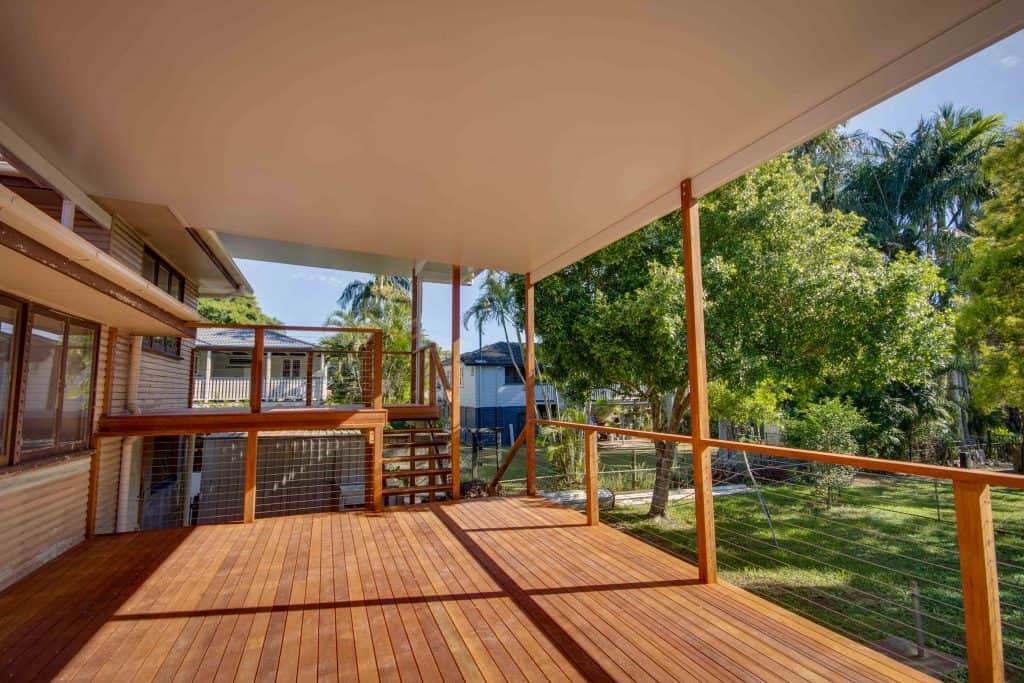- Diamond Patios Brisbane - Patios Made to Last
- 07 3804 6400
Insulated or Non-Insulated: Which Patio Roof to Choose

10 Reasons Your Cat Needs A Catio under Your Patio Roof
17 June 2023
The Benefits of a Patio Dog Enclosure: How Your Dog Can Benefit from Outdoor Time
17 July 2023When it comes to creating an outdoor living space, one of the most important decisions you’ll make is choosing the right type of roof for your patio. Two common options are insulated and non-insulated roofs. In this blog, we’ll explore the benefits of each and help you determine which is right for your needs.
Benefits of installing a patio roof
A patio roof offers a variety of benefits for homeowners, including protection from the sun and rain, as well as an extension of living space. When choosing a patio roof, there are two main options to consider: an insulated roof or a non-insulated roof.
The Benefits of an Insulated Patio Roof
- More energy-efficient
- Regulates temperature for year-round comfort
- Reduces noise levels
The Benefits of a non-Insulated Patio Roof
- More affordable
- Easier to install
- Weather-resistant materials offer durability and low maintenance costs
- Suitable for warm climates
Ultimately, the choice between an insulated or non-insulated patio roof will depend on your specific needs, budget, and climate. Consulting with a professional roofing contractor can help you determine which option is best for your home, ensuring that you have a high-quality patio cover that meets all of your requirements.
Now let’s do a deep dive into all the considerations needed when choosing your patio roof, so you can decide which is best for you.
Comparing the Costs
When deciding between an insulated or non-insulated patio roof, cost is a key consideration that cannot be overlooked. Both options have their advantages and disadvantages, but your budget and long-term savings will likely determine the best choice for your needs.
In terms of material costs, insulated patio roofs are generally more expensive than their non-insulated counterparts. The added insulation layer, whether it’s made of foam, fibreglass, or cellulose, increases the overall cost of the roofing material. However, it’s important to keep in mind that an insulated roof can lead to significant savings on energy bills in the long run.
Non-insulated patio roofs are generally more affordable, but they come with their own set of considerations. They may require additional cooling or heating systems to make the outdoor space comfortable, such as fans or blinds. This can add to your long-term costs, making the initial savings of a non-insulated roof less significant.
In addition to the cost of materials, professional installation by experienced local roofing contractors is crucial to ensuring a high-quality and long-lasting patio cover. A reliable roofing company will offer a free estimate and provide guidance on the best design and material options to fit your budget and style preferences. The cost of installation will depend on the size of your patio, the complexity of the design, and the materials used. A roofing contractor can help you determine the best options for your budget and ensure the installation is done correctly to avoid costly repairs down the line.
Temperature Control
An insulated patio roof offers superior temperature regulation compared to a non-insulated roof. The insulation materials like foam, fibreglass or cellulose used in an insulated patio roof help to regulate the temperature of your outdoor living space, keeping it cool in the summer and warm in the winter. This can reduce the need for costly heating and cooling, making it an energy-efficient option that can save you money on utility bills.
If you want to enjoy your outdoor living space throughout the year, an insulated patio roof is the better choice.
Design Options
When it comes to the aesthetics of your home, a well-designed patio cover can add significant street value and enhance the overall look of your property. Insulated and non-insulated patio roofs offer a range of design options to choose from, and working with an experienced roofing contractor can help you select a design that complements your home’s style and increases its visual appeal.
With non-insulated patio roofs, materials like aluminium or steel can provide a modern, streamlined look that’s perfect for contemporary homes. If you’re looking for a more traditional or classic style, shingle or tile roofs may be a better choice. Because non-insulated roofs are typically less expensive, they’re a more cost-effective option for homeowners who want to improve their home’s exterior without breaking the bank.
Insulated patio roofs offer more design options and can add a touch of elegance and sophistication to your outdoor living space. By choosing high-quality insulation materials and working with a roofing contractor who specialises in energy-efficient patio covers, you can create a patio that’s both aesthetically pleasing and comfortable year-round. An insulated roof can further increase the value of your home and make it more appealing to potential buyers if you decide to sell in the future.
Maintenance and Upkeep
Maintaining your patio roof is crucial in ensuring it has a long lifespan and remains in good condition. When deciding between an insulated and non-insulated patio roof, consider the maintenance requirements of each option.
Non-insulated patio roofs typically require less maintenance than insulated ones. Choosing durable materials such as aluminium or steel can ensure your patio roof is resilient to weather damage and requires minimal upkeep. Still, regular maintenance services from a reliable roofing contractor can help keep your non-insulated patio roof in top condition and prolong its lifespan.
Insulated patio roofs may require more maintenance, depending on the type of insulation used. Foam and fibreglass insulation require regular cleaning to maintain their effectiveness, while cellulose insulation may require replacement after several years. However, proper maintenance of an insulated patio roof can increase its energy efficiency and overall lifespan.
Regardless of which option you choose, selecting an experienced roofing contractor is essential to ensure the proper maintenance and repair of your patio cover. A professional roofing company will offer regular maintenance services, make any necessary repairs, and provide a warranty on their work. This can give you peace of mind that your investment in your home’s outdoor living space is protected.
Whether you love to entertain, exercise, or simply relax, a patio cover is the perfect addition to your outdoor living space. Reach out to us today to explore your design and material options.
Find more information on how we can help with your patio roof, or contact us.






